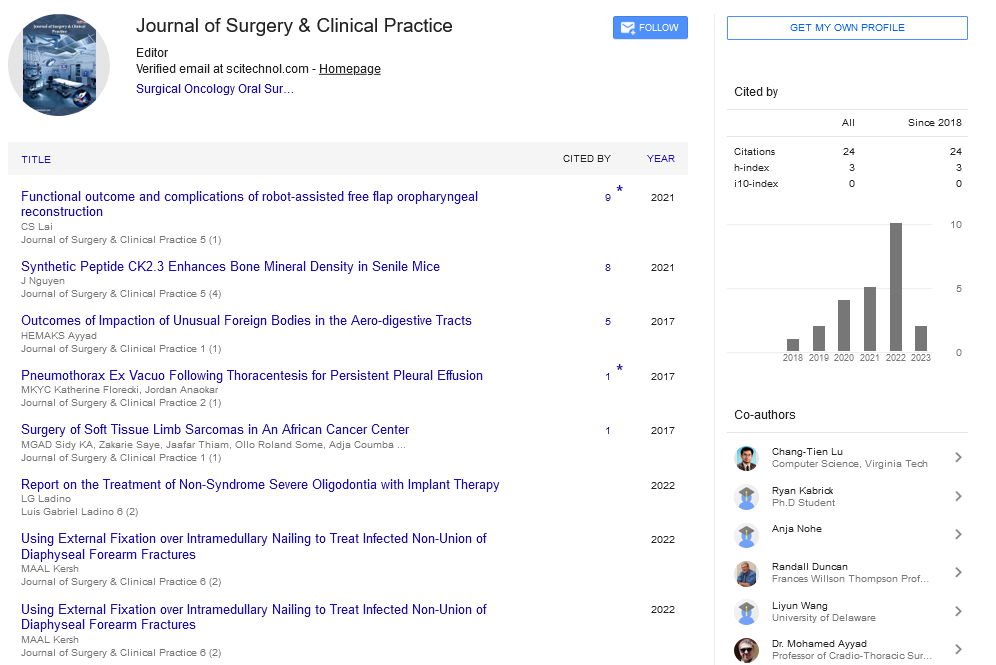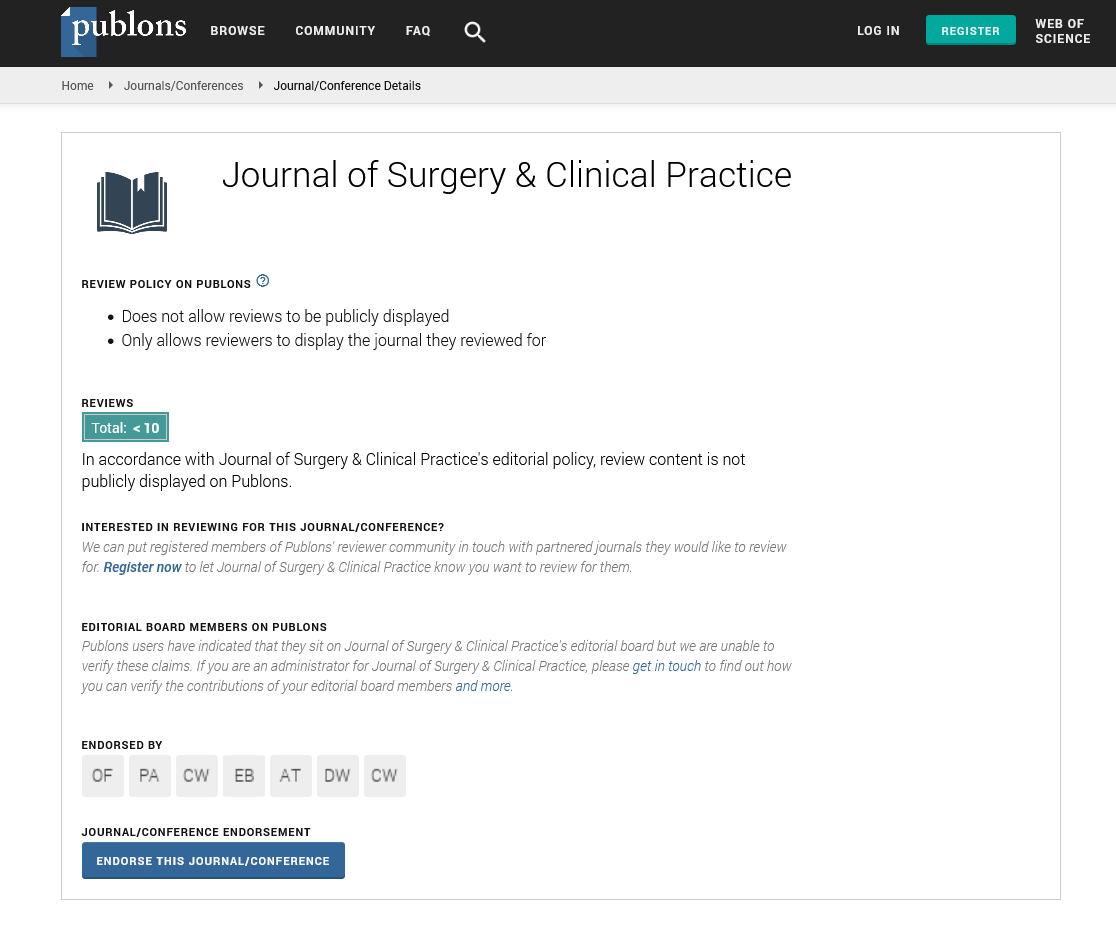Functional navigation in hip resurfacing using the corin optimized positioning system
Waters G
Fiona Stanley Fremantle Hospitals Group, Australia
: J Surg Clin Pract
Abstract
Acetabular malposition in total hip arthroplasty can lead to instability, impingement, and edge loading resulting in eccentric loading and increased wear that can lead to bearing failure. Eccentric wear in metal on metal bearings used in Birmingham Hip Resurfacings (BHR) produces metal debris. Mounting body of evidence suggesting that one generic zone such as Lewennik’s “safe zone” is unreliable. Functional positioning of acetabular component relative to patient specific dynamic pelvic tilt throughout a range of activities is crucial. The aim use OPS to analyze pre-operative acetabular position, determine patient specific functional “safe-zone” and employ customized alignment guides to implant BHR acetabular components resulting in improved functional and radiographical outcomes. OPS performed pre-operatively in 13 patients to create customized implant alignment guides. Data collected pre and post-operatively at 6, 12 and 52 weeks. Primary outcome measures of functionality including Oxford Hip Scores, dislocation and revision rates. OPS post-operatively to evaluate positioning. Secondary outcome measure of serum metals ions monitoring for metallosis. Improved Oxford Hip Scores post-operatively. Currently no revision surgeries or dislocations have occurred. Preliminary results from postoperative OPS indicate no edge loading. Use of OPS results in improved precision and accuracy in achieving patient specific functional acetabular “safe-zone” thus improving functional outcomes and reducing edge loading in BHR.
Biography
Waters G is an Orthopaedic Registrar at Fiona Stanley Hospital in Perth, Australia. She completed her post-graduate Bachelor of Medicine and Surgery at the University of Western Australia in 2014.
E-mail: georginacwaters@gmail.com
 Spanish
Spanish  Chinese
Chinese  Russian
Russian  German
German  French
French  Japanese
Japanese  Portuguese
Portuguese  Hindi
Hindi 
